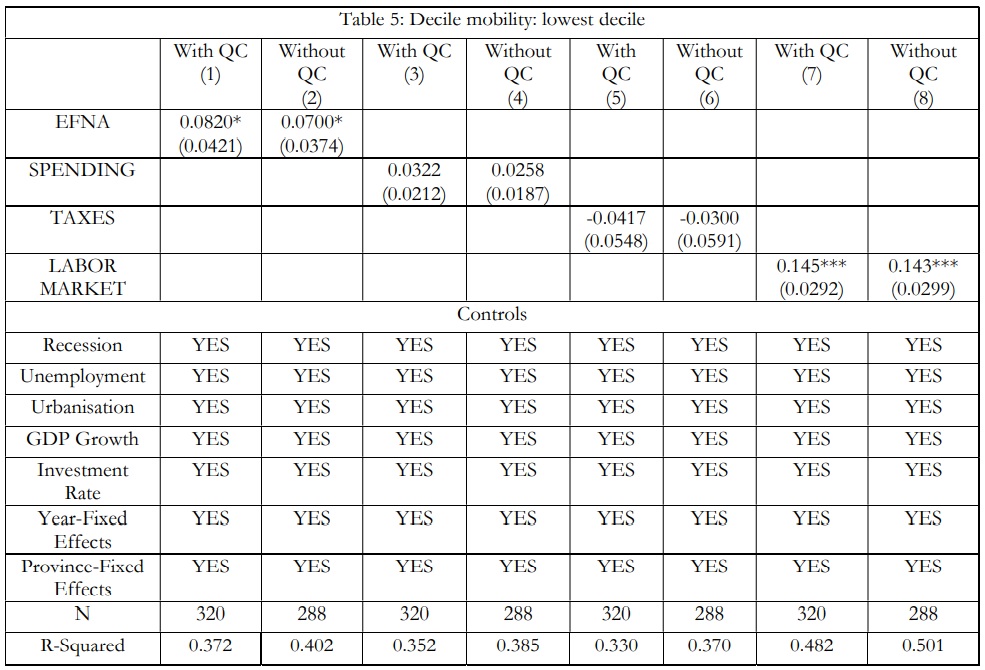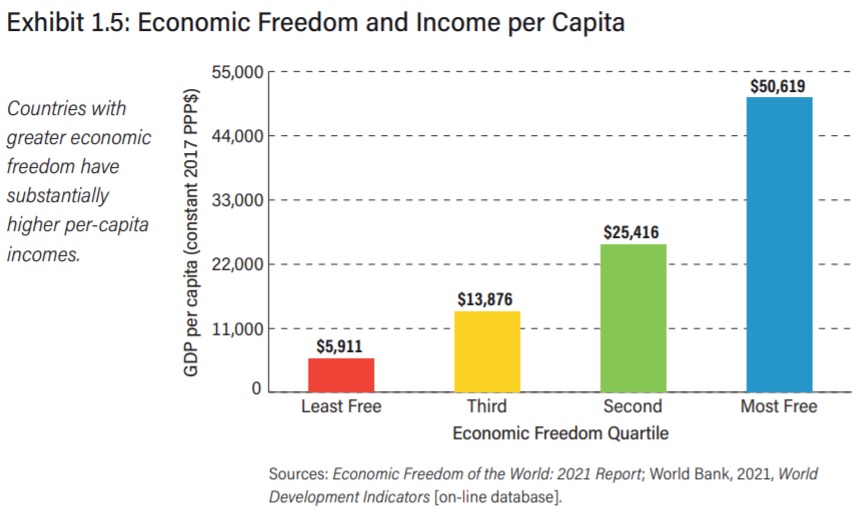Writing last week about the new edition of Economic Freedom of the World, I largely focused on the jurisdictions that got high scores (Hong Kong, Singapore, and New Zealand) and countries that got low scores (Venezuela in last place, of course).
But I also included a chart showing that higher levels of economic liberty are correlated with higher levels of income.
That’s hardly a surprise for anyone who’s compared North Korea and South Korea. Or West Germany and East Germany.
But what about income mobility? Do free markets give low-income people an opportunity to climb the economic ladder?
Some new research from Vincent Geloso of George Mason University and James Dean of West Virginia University answers that question.
Here’s the abstract from their study.
Economic freedom is robustly associated with income growth, but does this association extend to the poorest in a society? In this paper, we employ Canada’s longitudinal cohorts of income mobility between 1982 and 2018 to answer this question. We find that economic freedom, as measured by the Fraser Institute’s Economic Freedom of North America (EFNA) index, is positively associated with multiple measures of income mobility for people in the lowest income deciles, including a) absolute income gain; b) the percentage of people with rising income; and c) average decile mobility. For the overall population, economic freedom has weaker effects.
And here’s the part of the study that I found most interesting.
We learn that labor market freedom is most important.
When focusing on the bottom decile’s average decile mobility (see table 5), we must note this variable only measures upward decile mobility, as those in the poorest decile cannot move down a decile and the upper decile can only move down or stay put. As a result, the effect of economic freedom is likely somewhat understated because of these mathematical boundaries. Nevertheless, we see that greater economic freedom increases the lowest decile’s upward decile mobility. In essence, higher amounts of economic freedom improve the relative gains of those at the bottom of the distribution, allowing them to move to higher deciles. Here, again, we see that the labor market freedom component is key for the nation’s poorest, such that an additional point of labor market freedom allows those beginning in the poorest decile to move up an additional 0.145 deciles… To put that number into perspective, using the differences in economic freedom between Quebec and Alberta (i.e. the lowest and highest economic freedom units in our data) is again useful. The greater labor market freedom of Alberta entails that the poorest Albertans have 0.44 extra deciles of mobility on average than the poorest Quebeckers.
Wonky readers may enjoy the aforementioned Table 5.

The bottom line is that free markets and limited government are the recipe to help poor people climb the economic ladder, not class warfare and redistribution (as I explained here, here, here, and here).
It’s much better to focus on how to make poor people rich rather than trying to make rich people poor.
———
Image credit: Vinicius Altava | Pexels License.



